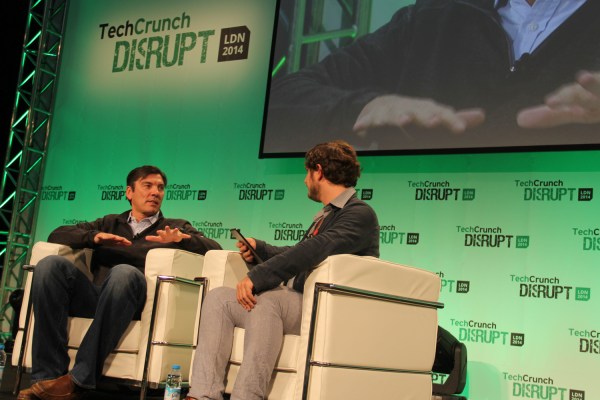During today’s call with analysts, AOL CEO Tim Armstrong laid out some of his plans and priorities for 2015, and he elaborated on those plans in a short TechCrunch interview afterward.
This comes after AOL laid off what we heard was about 150 employees, and closed two of its tech sites, Joystiq and TUAW — though they survive, to an extent, as parts of Engadget. Armstrong told analysts that the company will continue to invest in other areas, including the Huffington Post, its women’s sites and tech sites (AOL owns TechCrunch), and its ad platform, where the company is working to create “a sales force and revenue channel structure for the new world of advertising.”
In order to pay for those investments, however, Armstrong said the “leaner and faster AOL” had to take resources from “existing lower-priority organizations.”
During our interview, Armstrong described this as a “one-time” move: “The plan around the restructuring was to do [something] that would allow us to do it all at once. And we’re not only doing restructuring, but investing tens of millions of dollars back into the business.”
He said the company is responding to broader industry changes — including the importance of creating global online brands, the growth of video, and the growth of programmatic advertising, where ad buying and selling is done in a more automated fashion.
On the ad side, I was curious about the custom content team that Armstrong mentioned during the call. He told me that these teams already exist in “pockets” throughout AOL, but this will allow the company to pursue more unified sponsored content initiatives. As for whether this team is at odds with AOL’s push toward programmatic, Armstrong said, “They’re basically 100 percent complementary. Advertisers have two needs — the first is that they need to make sure brands don’t get commoditized around content, while the second piece is that brands have to use automation for the scale that the industry has changed to.”
By the way, even though Armstrong stayed positive during our interview, those earnings actually didn’t go so well for AOL, with disappointing fourth-quarter revenue numbers leading to a significant drop in stock price. We didn’t discuss Wall Street’s disappointment specifically, but Armstrong did highlight the fact that 2014 was the company’s second consecutive year of growth in revenue and profitability, leading him to suggest that AOL is “the only large Internet company I know of to go through the first generation of the Internet and come back strong in the second generation.”
That might be a surprise to the seemingly endless supply of TechCrunch readers who respond to any story about the company by asking, “Wait, AOL still exists?”
I did bring this up, indirectly, by asking whether AOL will eventually become a name that’s known primarily to investors and advertisers. Armstrong said that the core AOL brand will “be around for a long, long time,” while its focus is shifting from “connecting humans to the Internet” to “curating the Internet.” Looking ahead, he suggested that the company will have “three massive components,” namely the corporation, the consumer brand, and the other brands (like TechCrunch) and ad platform business.
And yes, because anyone who interviews Armstrong is contractually obligated to bring up those Yahoo acquisition rumors (and more recently a report that Verizon was interested in buying the company), I did ask.
Armstrong suggested that this kind of speculation happens because, “In a very natural way, AOL comes up in tons of conversations around other companies’ strategies. But it’s not that we’re aligning ourselves with other companies, it’s that their strategies are coming towards us.”
He added that there there’s a big difference between the extent to which companies are discussed externally and internally at AOL.
“The conversations around Yahoo — in general, we don’t spend any time focused on Yahoo or worried about Yahoo,” he said. “We’ve focused on AOL, and I think that’s why we’ve been successful.”
